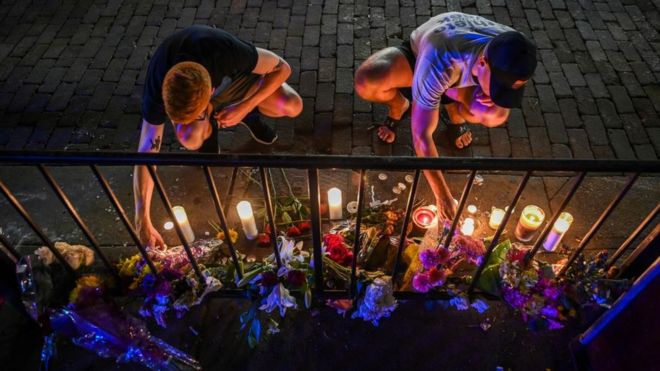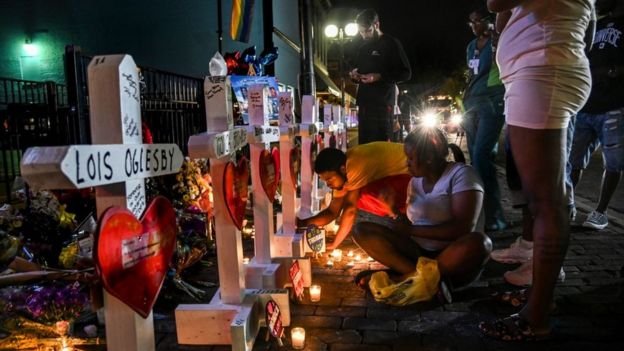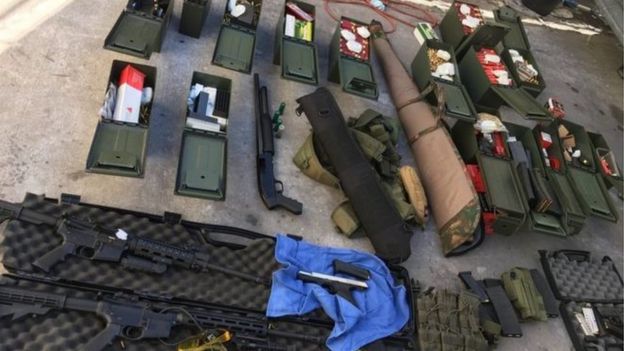Two mass shootings within 24 hours, leaving 31 people dead, has once again brought the spotlight on gun ownership in the United States.
An attack on a Walmart store in El Paso, Texas on Saturday left 20 dead, while nine died in a shooting in Dayton, Ohio on Sunday.
But where does America stand on the right to bear arms and gun control?
What do young people think about gun control?
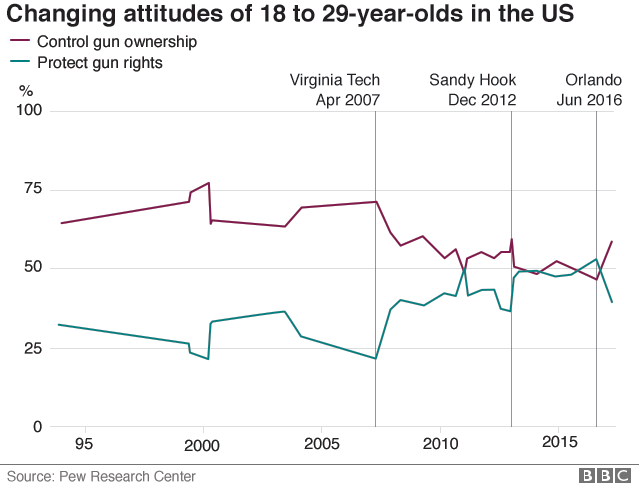
When looking at the period before the Parkland school shooting in 2018, it is interesting to track how young people have felt about gun control.
Support for gun control over the protection of gun rights in America is highest among 18 to 29-year-olds, according to a study by the Pew Research Centre, with a spike after the Orlando nightclub shooting in 2016. The overall trend though suggests a slight decrease in support for gun control over gun rights since 2000.
Pew found that one third of over-50s said they owned a gun. The rate of gun ownership was lower for younger adults – about 28%. White men are especially likely to own a gun.
How does the US compare with other countries?
About 40% of Americans say they own a gun or live in a household with one, according to a 2017 survey, and the rate of murder or manslaughter by firearm is the highest in the developed world. There were almost 11,000 deaths as a result of murder or manslaughter involving a firearm in 2017.
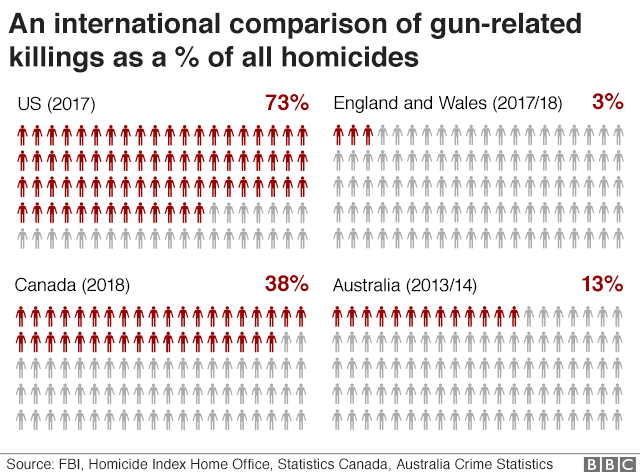
Homicides are taken here to include murder and manslaughter. The FBI separates statistics for what it calls justifiable homicide, which includes the killing of a criminal by a police officer or private citizen in certain circumstances, which are not included.
In about 13% of cases, the FBI does not have data on the weapon used. By removing these cases from the overall total of gun deaths in the US, the proportion of gun-related killings rises to 73% of homicides.
Who owns the world’s guns?
While it is difficult to know exactly how many guns civilians own around the world, by every estimate the US with more than 390 million is far out in front.
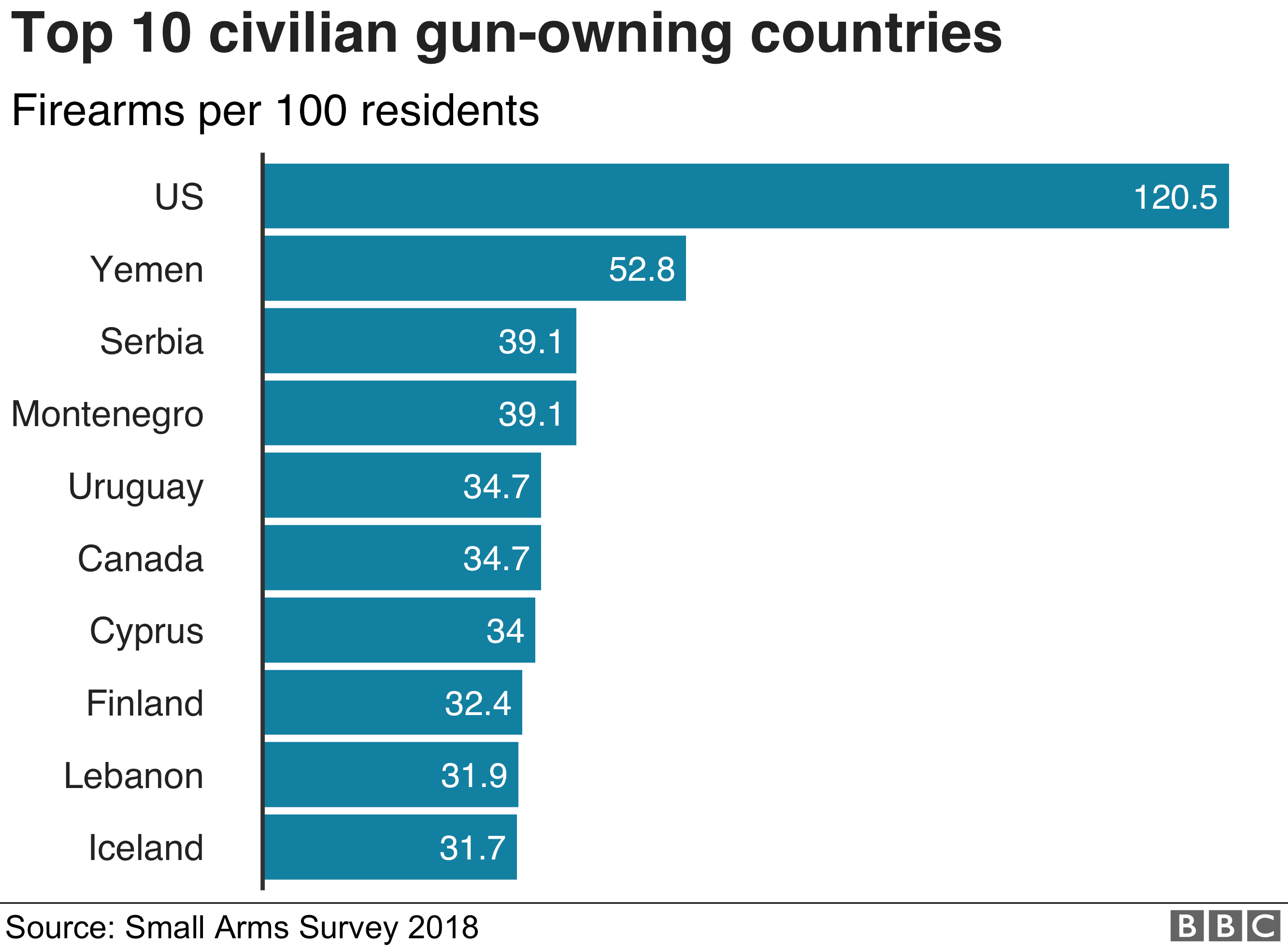
Switzerland and Finland are two of the European countries with the most guns per person – they both have compulsory military service for all men over the age of 18. The Finnish interior ministry says about 60% of gun permits are granted for hunting – a popular pastime in Finland. Cyprus and Yemen also have military service.
How do US gun deaths break down?
There have been more than 110 mass shootings in the US since 1982, according to investigative magazine Mother Jones.
Up until 2012, a mass shooting was defined as when an attacker had killed four or more victims in an indiscriminate rampage – and since 2013 the figures include attacks with three or more victims. The shootings do not include killings related to other crimes such as armed robbery or gang violence.
The overall number of people killed in mass shootings each year represents only a tiny percentage of the total number.

Figures from the Centers for Disease Control and Prevention show there were a total of more than 38,600 deaths from guns in 2016 – of which more than 22,900 were suicides. Suicide by firearm accounts for almost half of all suicides in the US, according to the CDC.
A 2016 study published in the American Journal of Public Health found there was a strong relationship between higher levels of gun ownership in a state and higher firearm suicide rates for both men and women.
Attacks in US become deadlier
The Las Vegas attack in 2017 was the worst in recent US history – and eight of the shootings with the highest number of casualties happened within the past 10 years.
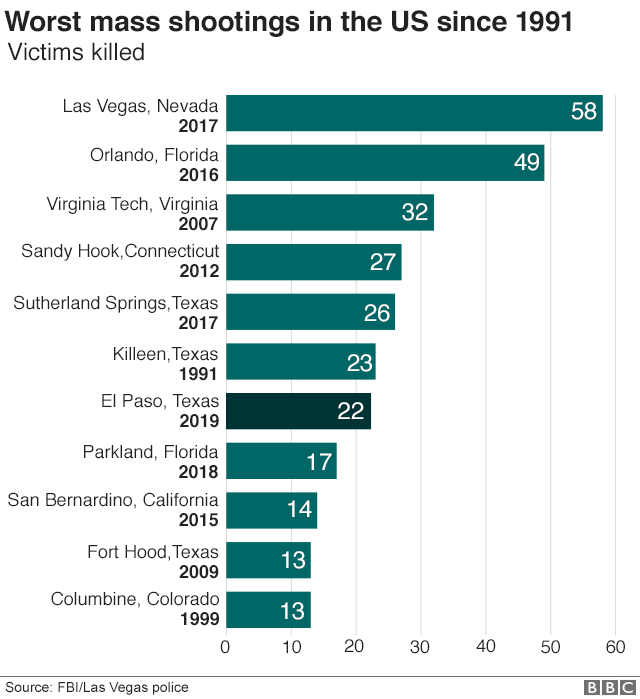

What types of guns kill Americans?
Military-style assault-style weapons have been blamed for some of the major mass shootings such as the attack in an Orlando nightclub and at the Sandy Hook School in Connecticut.
Dozens of rifles were recovered from the scene of the Las Vegas shooting, police reported.
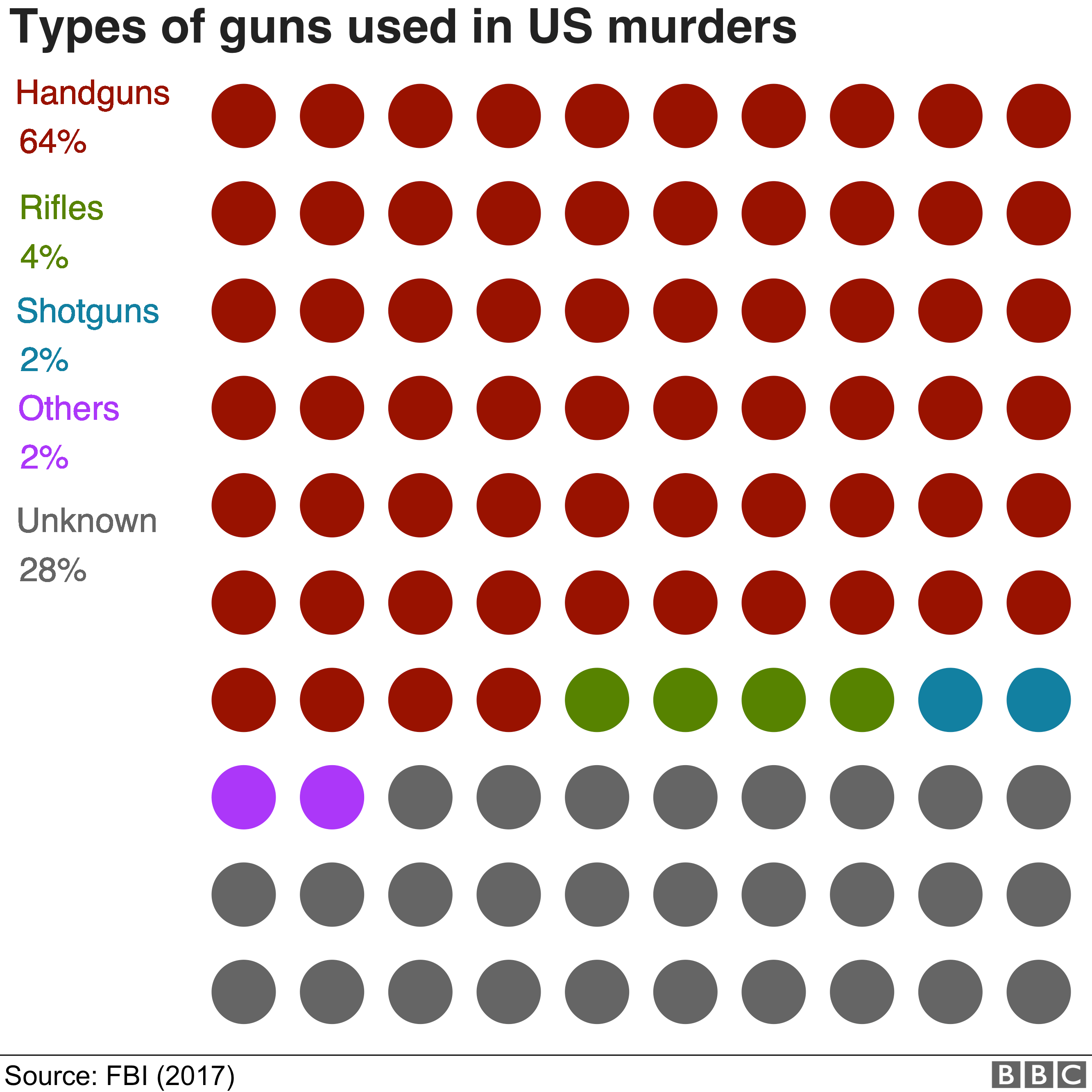

A few US states have banned assault-style weapons, which were totally restricted for a decade until 2004.
However most murders caused by guns involve handguns, according to FBI data.
How much do guns cost to buy?
For those from countries where guns are not widely owned, it can be a surprise to discover that they are relatively cheap to purchase in the US.
Among the arsenal of weapons recovered from the hotel room of Las Vegas shooter Stephen Paddock were handguns, which can cost from as little $200 (£151) – comparable to a Chromebook laptop.
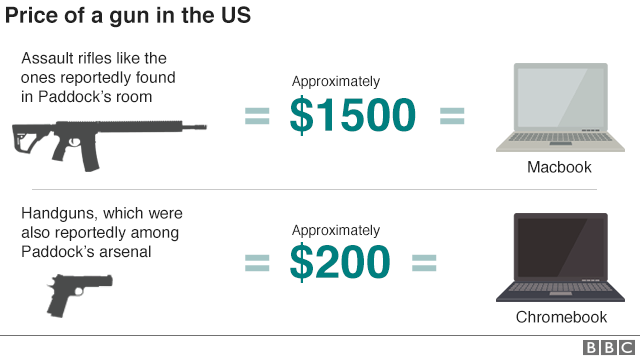
Assault-style rifles, also recovered from Paddock’s room, can cost from around $1,500 (£1,132).
In addition to the 23 weapons at the hotel, a further 19 were recovered from Paddock’s home. It is estimated that he may have spent more than $70,000 (£52,800) on firearms and accessories such as tripods, scopes, ammunition and cartridges.
Who supports gun control?
US public opinion on the banning of handguns has changed dramatically over the last 60 years. Support has shifted over time and now a significant majority opposes a ban on handguns, according to polling by Gallup.
But a majority of Americans say they are dissatisfied with US gun laws and policies, and most of those who are unhappy want stricter legislation.
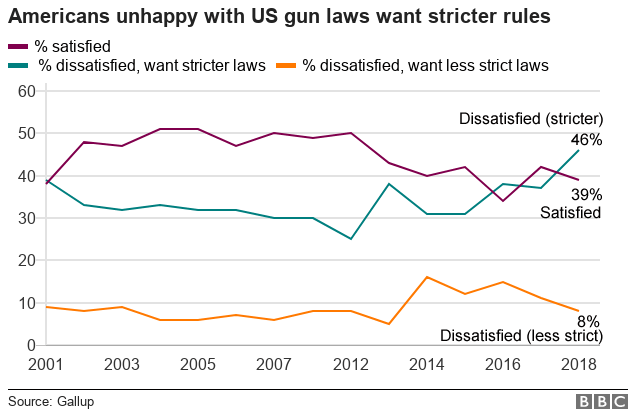
Some states have taken steps to ban or strictly regulate ownership of assault weapons. Laws vary by state but California, for example, has banned around 75 types and models of assault weapon.
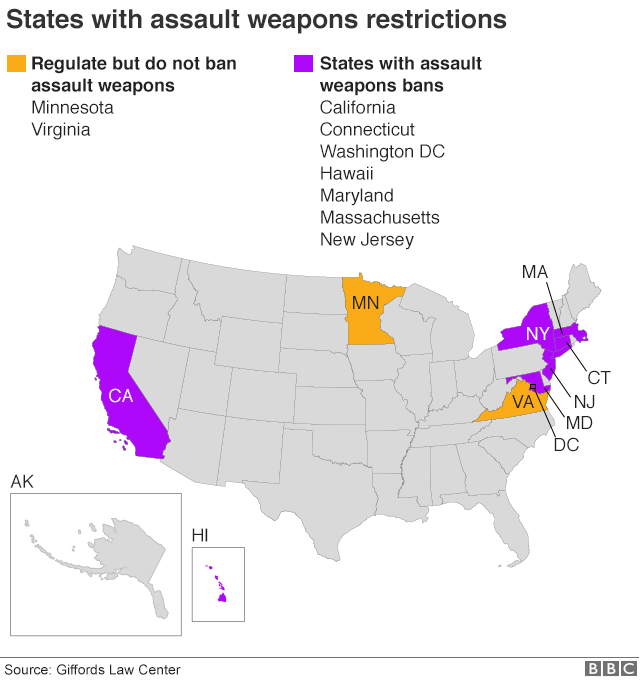

Some controls are widely supported by people across the political divide – such as restricting the sale of guns to people who are mentally ill, or on “watch” lists.


But Republicans and Democrats are much more divided over other policy proposals, such as whether to allow ordinary citizens increased rights to carry concealed weapons – according to a survey from Pew Research Center.
Who opposes gun control?
The National Rifle Association (NRA) campaigns against all forms of gun control in the US and argues that more guns make the country safer.
It is among the most powerful special interest lobby groups in the US, with a substantial budget to influence members of Congress on gun policy.
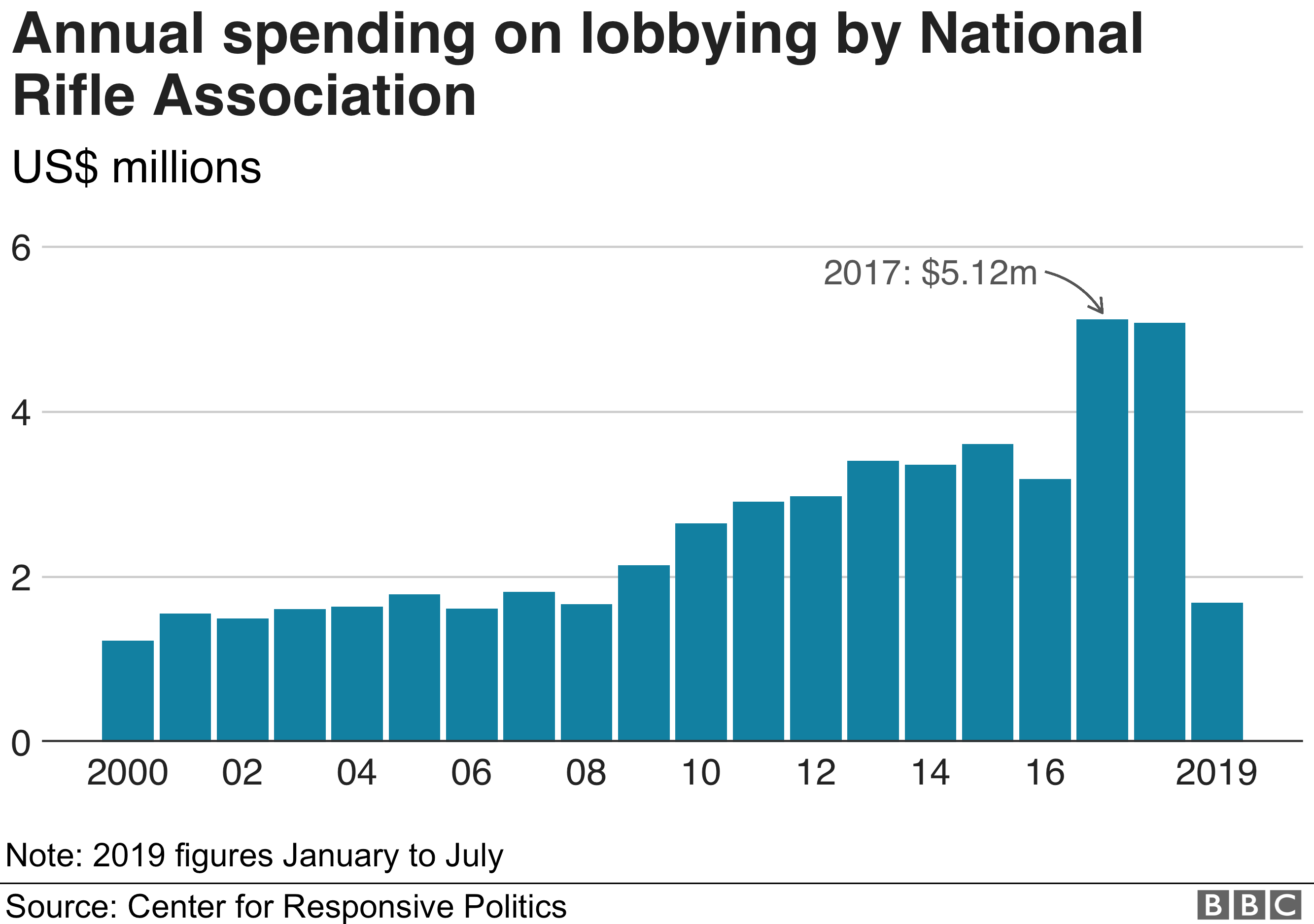
In total, about one in five US gun owners say they are members of the NRA – and it has especially widespread support from Republican-leaning gun owners, according to Pew Research.
In terms of lobbying to influence gun policy, the NRA’s spending jumped from about $3m per year to more than $5m in 2017.
The chart shows only the recorded contributions to lawmakers published by the Senate Office of Public Records.
The NRA spends millions more elsewhere, such as on supporting the election campaigns of political candidates who oppose gun controls.
